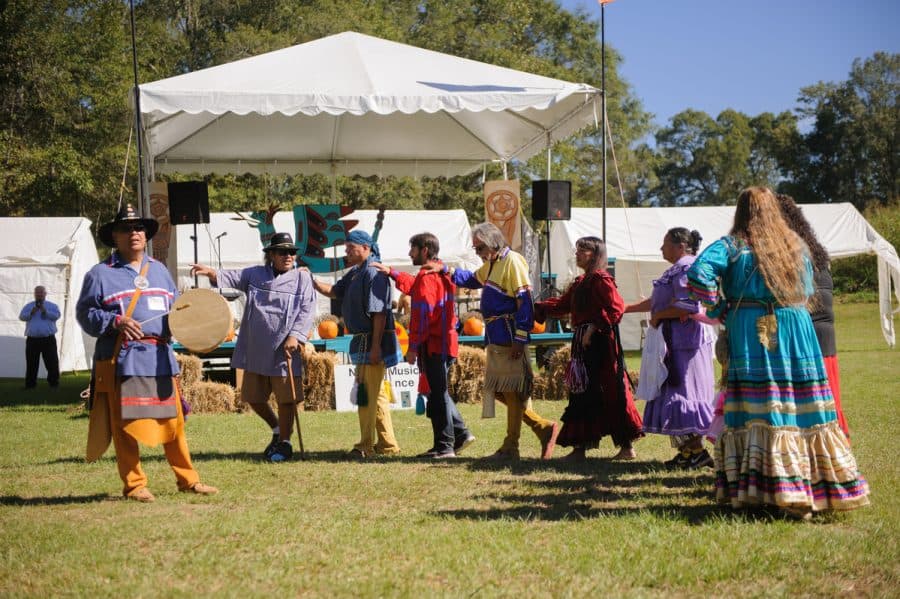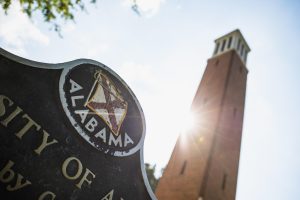Moundville Native American Festival: remembering the past, hope for the future
October 30, 2022
On Saturday, Oct. 15, the Moundville Archaeological Park hosted its 34th annual Native American Festival. Every year the museum and park host the event for different Native American tribal groups to demonstrate their artistry and craftsmanship by selling homemade art pieces, singing songs, performing dances and telling stories.
The festival is a week-long event with the purpose of highlighting and illuminating Native culture and history from before European colonization to the present day.
Aside from its historical significance with the Mississippian indigenous cultures, the Moundville Archaeological Park site also has great religious significance. The goal of the event is to educate future generations of both Native and non-Native Americans about the cultural history of the location, tribal habits and traditions, rituals, and aspects of their unique religion.
The festival takes place on the land of an ancient Native American city. Unique for the human-made dirt mounds that decorate the land, archeological research suggests that the mounds could have been built for a number of reasons. The biggest mound was dedicated for religious purposes — allowing priests to be closer to the stars — and other elevated plains reflected the social hierarchy of the community. The elite both lived on and buried their dead in the hills.
When the Southeastern region of the United States was colonized by white settlers, native groups who lived in the area suffered encroachment and harassment until the United States military removed tribes, including the Cherokee, Creek, Chickasaw, Choctaw and Seminole tribes, in the 1830s to reservations in Oklahoma — an event known as the Trail of Tears.
Although the tribes no longer bury their dead there now, the significance of the site is still relevant to this day. Every year when the festival takes place, it is the opportunity to return to the area in honor of their past, their ancestors and the preservation of their culture.
William Daniel Isaac, a member of the Mystic Wind Traveling Dance Troupe, said the importance of Moundville is to “share the medicine.”
In showing and sharing traditions with others, his people are healed from the torture and trauma their ancestors endured at the hands of settlers. Through performing different types of dances — social, warrior or animal dances — Isaac honors his past while also exposing children to a culture they share with him. It is essential to him that no part of Native American culture is lost to the wind anymore.
“Why we’re doing it is we’re promoting our culture, but at the same time, we’re teaching the next generation of young people,” Issac said. “Let people know and be aware that we’re still here.”
Mary Smith, an award-winning Muskogee Creek Native American artist, shared her history via her craft of handmade mats and recreation of clothing. One of her mats is on permanent collection at the Red River Museum in Idabel, Oklahoma, while another is touring the U.S. with the traveling Smithsonian Museum. A turkey and goose-feather chief cloak that she made in collaboration with Walter Galan currently resides at the Moundville Archeological Museum.
“I was [working on the cloak] for two and a half months,” Smith said. “Every feather was sewn on individually … Walter Galan made the netting and I did the feather work.”
The event is important because they grew up going there for field trips during the school year.
Flynn Lewellyn, a junior majoring in anthropology and creative media at The University of Alabama, said they have been going to the festival since they were little, and it inspired their decision to major in anthropology.
“It was really awesome to have this come full circle, because I grew up in Moundville and I grew up going to this festival and it’s a part of the [reason] that made me want to be an anthropologist,” Lewellyn said.
Lewellyn returned to the event this year as a volunteer to teach fourth graders about stratigraphy, a principle used by archeologists when exploring digging sites, alongside other members of the Anthropology Club and faculty of the Office of Archeological Research.
The Native American Festival returned in full force this year after being virtual for the past two years because of the pandemic, showing the dedication of both the Native groups that choose to share their culture as well as the volunteers and staff that organize the festival every year.
Rebecca Johnson, the communications specialist for UA Museums, said it was a new experience for her because it was the first time she ever organized a website for the festival.
Johnson said the website did its best to replicate the in-person experience of the festival over computer screens with video, pictures and even a livestream where people could come and ask questions to performers and demonstrators.
The focus of the event is to pass down tradition and knowledge to the next generation. The preservation of Moundville and Native culture, trade and craftsmanship at large relies on teaching children the ways of both old and new. It is a connection of the future to the past which is the very thing that keeps all history alive.
The Moundville Native American Festival has become an integral part of the community surrounding the ancient site, just as it is significant to the indigenous people who return every year. For Native Americans, it is an exercise of their culture, and for non-Natives, it is a teaching of current history and a reminder that Native Americans have not faded into the background of American history — they are the originators and are still here with us.





















